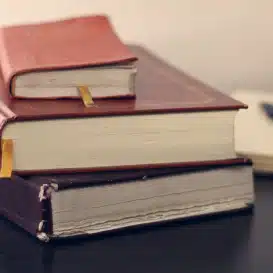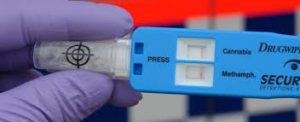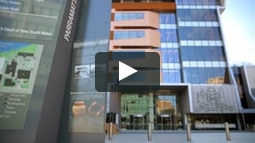Is the New NSW Drug Driving Testing Effective and Fair?
Did you know that police in NSW can randomly pull people over and submit them to a drug driving test without any just cause or provocation? After just 3 to 8 minutes of administering a saliva test police can tell if someone has ingested or inhaled Cannabis, methamphetamine or ecstasy. According to the Road Transport Act 2013 (NSW), it is “illegal to drive with THC, methamphetamine or ecstasy ‘present’ in the driver’s saliva, blood or urine. The charge of Driving with Illicit Drug Present in Blood carries a possible 6 months disqualification upon conviction, and a criminal record if convicted.
Josh Butler of the Huffington post reports that over 36,000 people were pulled over in NSW for random drug testing in 2015. Inspector Steve Blair, commander of the random drug testing unit, is quoted in the article saying that in June and July of last year alone police “administered 1,900 roadside drug tests” and of those tests “1 in 6 came back positive for cannabis, amphetamines or ecstasy.
In response to an increase in drug driving fatalities on NSW roads, random drug driving testing was rolled out in full force statewide in NSW last September.
Police say that drug testing has been put in place to focus primarily on road safety because drug drivers not only put their own lives at risk but also the lives of other drivers and innocent pedestrians as well. For example, according to NSW Roads Minister Duncan Gay in August 2014 “11 percent of fatalities on NSW roads involved motorists with illicit drugs in their system.”
Transport for NSW Centre for Road Safety Drug Driving Fact Sheet reports that between 2010 and 2013 there were 174 motor vehicle accidents with 195 fatalities due to drug driving. During that period over 1,000 people were convicted of drug driving offences across the state.
Police further argue that the new drug driving tests will also give them an accurate picture of what is really happening on NSW roads and how prevalent drug driving really is.
Is the the new drug driving laws helping to remove dangerous drivers from our roads or is it needlessly prosecuting?
The police say drug driving tests are just a road safety issue. However, critics argue that these tests do not tell police how intoxicated a person is or worse if the person is in fact intoxicated at all. For example, if you are around people smoking cannabis a saliva test could falsely show positive for active THC in your system. According to David Lovejoy in his article posted on Echonetdaily, drug driving tests “test for minuscule amounts of cannabis, which means that a trace amount in a driver’s body, records a positive reading – even though there is no suggestion that the drug is affecting the driver.”
When it comes to drug testing, there is no allowable limit like there is with alcohol. With alcohol a driver can have a threshold of 0.05 blood alcohol concentration without it impairing his or her ability to drive. However, with drug tests there is no threshold, it is absolute zero tolerance.
Inspector Steven Blair is quoted in Butler’s article as saying “it is purely a presence offence” and agrees that the police are not saying that drivers, as he puts it are “impaired or off [their] face.” He says “the offence is simply a strict liability. If you have it in your system, that’s it.”
Stephen Blanks, president of the NSW Council for Civil Liberties, argues that the strict liability offence is “unfair to drivers.” Drug driving testing only measures whether a person has recently used a drug, it does not measure levels of impairment.” The charge of Driving with an Illicit Drug Present in Blood does not measure the level of impairment.
The charge of Driving under the influence of a drug, however does measure the level of impairment, through the measurement of the amount of drugs in your system at the time of driving.
The Innaccuracy of “Lick Tests”
Lovejoy also argues that drug driving tests are defective and cause many false positives. For example, he highlights that during ‘Operation Saturation’ in June and July of last year, tests were administered to 1,376 people. However, even though “246 of these test returned positive results.” Once they were “immediately tested again in a mobile drug lab, 72 – more than a third – were found not to be positive at all.”
Critics further point out that this new drug driving law is particularly troubling because no two people metabolise drugs in the same way. For some people drugs can show up in their system hours, even days after ingestion. Inspector Steven Blair counters that the fact that drugs can “sometimes remain in a person’s system for several days after consumption” is a good thing because it may act as “a further deterrent to drivers” (Huffington post).
However as Green MP David Shoebridge points out, with nearly 100,000 NSW residents being subjected to these drug driving tests each year, “inevitably thousands of people will be losing their licence for up to 12 months and [will have] to pay significant fines when there was no evidence they were a danger to other road users.” Shoebridge further says “the drug testing [i]s a waste of money that undermine[s] the legal system by making it a “defacto criminal offence of having potentially minuscule quantities of drugs present in your system.”
Another issue is that of fairness. Current drug driving tests test for THC, amphetamines or ecstasy. However, the current tests do not test for morphine or cocaine even though it is also illegal to drive with these substances in your system as well. So that means cannabis users could be punished for drug driving while people using cocaine can get away unscathed. The drug driving tests also do not test for legal medications like anti-depressants or painkillers, and are unable to test for the new synthetic drugs. All of which can also significantly impact driving as well.
This difference in the type of drugs tested one could argue might push some people to use other illicit substances as a way to avoid getting caught and charged for drugs that the drug driving test currently tests for.
Finally, Inspector Blair proudly reports that of the 36,000 drug tests administered to NSW drivers almost 12 percent returned positive readings.” It still does not take into account how many of those 12 percent may have been false positives.
We all agree that people who take drugs to the point of intoxication and drive are a danger not only to themselves but also to others on the road. However, it would be well worth the effort to look into systems like those in Britain that test for levels of impairment, as well as for legal and illegal substances that impair driving instead of the current drug driving testing that Australian National University and health and justice expert David McDonald argues according the Sydney Morning Herald is an “infringement of personal rights” and a “gross waste of public funds.”
References:
http://www.echo.net.au/2015/12/drug-driving-law-fails-justice-test/
http://www.andatech.com.au/resource/future-drug-testing-australia/
http://davidshoebridge.org.au/2015/10/06/ media-100000-nsw-residents-to-be-targeted-in-wasteful-unfair-roadside-drug-testi ng/
http://www.echo.net.au/2015/07/a-third-of-regions-drivers-test-false-positive-after-roadside-swipes/
http://www.ismokemag.co.uk/drug-driving-tests-bad-time-cannabis-users/
http://www.telegraph.co.uk/cars/safety/drug-driving-how-big-is-the-problem/
http://www.huffingtonpost.com.au/2015/09/12/police-drug-test_n_8097398.html
http://www.sunshinecoastdaily.com.au/news/police-in-blitz-on-drug-drivers-as-rate-jumps/2650563/







